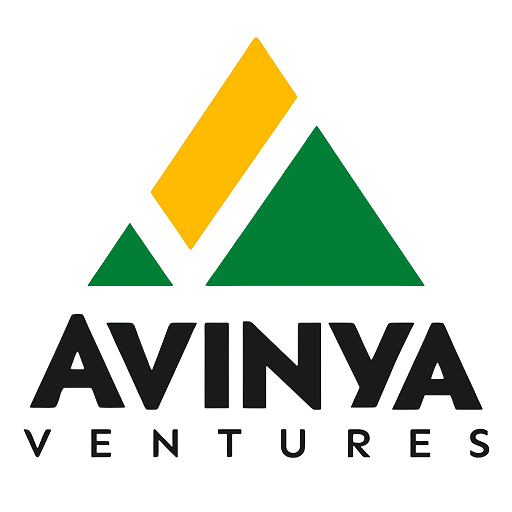In recent years, the construction industry has struggled to overcome a variety of challenges that impede success. Labor shortages, worksite injuries, competition with inflation, high carbon emissions and project delays negatively impact construction companies, workers, and clients. Finding skilled construction workers, adhering to strict budgets, maintaining project collaborations, complying with the environmental norms and following tight deadlines only adds to the already challenging nature of completing safe, high-quality work.
In the face of these challenges, many construction companies are seeking scalable, sustainable solutions. Construction technology, in its many forms, helps overcome many of the challenges holding back the construction industry.
Among the most impactful additions to the world of construction are high-quality environment friendly building materials like AAC block and 3D printing technology.

AAC is a 100% green building material and is the walling material of choice for LEED-certified buildings. It also uses the least amount of energy per cubic-meter of production compared to concrete and bricks. AAC blocks are eco-friendly product as fly ash used is a waste generated from power plants which is a big problem for thermal power plants to dispose. It is environment friendly, because of no need of burning.
AAC Blocks:
AAC (Autoclaved Aerated Concrete) was invented in the mid-1920s by the Swedish architect and inventor Johan Axel Eriksson. AAC is one of the major achievements of the 20th century in the field of construction. It is a lightweight, precast building material that simultaneously provides structural strength, insulation, and fire resistance. AAC Blocks are used in new age construction as a building materials due to its heat, fire and sound resistance. AAC block is lightweight and offers ultimate workability, flexibility, and durability.
Growth Drivers of AAC blocks:
- AAC blocks are thinner, have better strength-to-weight ratio, and act as an excellent water barrier and insulation, floor space can be effectively increased by 3-5%.
- AAC blocks have a much lower weight density, it can reduce the dead weight of a building. This reduces the steel and cement required for the building’s construction, thus leading to substantial cost savings.
- Further, given that an AAC block is nine times the size of a clay brick, walls constructed with it have only 1/3rd of the joints, leading to an overall saving of up to 66% in mortar consumption.
- AAC walls have an excellent Sound Transmission Class (STC) rating of 44, which makes the interiors of a building virtually soundproof. It also has the highest thermal rating in the industry, thus insulating well from harsh weather conditions, both warm and cold.
- AAC has the best-in-class fire rating of up to 4 hours. Further, its melting point is over 1600 0 C, which is more than twice the typical building fire temperature of 650 0
- Owing to its high-pressure steam-curing, AAC blocks possess an excellent strength-to-weight ratio. It exceeds the strength of Ml 50 concrete and far exceeds the requirements of the Indian Building Code.

ACC Market Size:

The global market for Autoclaved Aerated Concrete (AAC) blocks was valued at approximately USD 19 billion (INR 1.5 lakh crore) in 2022 and is projected to grow at a compound annual growth rate (CAGR) of 6.2% over the next five years. In India, AAC was a meager INR 50 crore industry in 2008 and it has grown to about INR
4,000 crore in India (CAGR of —32%), with expectations of significant growth at a CAGR of 15-20%, potentially reaching USD 1.3 billion (approximately INR 10,000 crore) by 2027. The Indian market has experienced a tenfold increase in demand for AAC blocks in recent years, although it still accounts for only about 4% of the total brick market, which is predominantly dominated by clay bricks. The growth in India is driven by rising construction activities, government initiatives for affordable housing, and a shift towards sustainable building materials.
Indian landscape:
In India, there are approximately 150 AAC production facilities with a combined current capacity of 15 million cubic meters per year.
- Magicrete: Magicrete is the leader in AAC block manufacturing in the country and has an installed total capacity of 1 8 lakh cubic meters per annum. They have 3 plants located at Navsari, Jhajjar, wada. Magiccrete is backed by Motilal Oswal.
- BigBloc Construction Limited: The company is listed on NSE and has emerged as one of India’s premier manufacturers of AAC blocks and related products. The group is one of the largest manufacturers of AAC blocks and ALC slabs with a cumulative capacity of 13,25,000 cubic meters per annum. Birla Aercon: Birla Aercon is a part of HIL ltd which is listed on NSE and has a market cap of $250 Million+. Birla Aercon has a manufacturing capacity of 2500 AAC blocks per hour.
- Biltech: Biltech has a total installed capacity of 10.5 lakh cubic meters per year.
- Renaatus Procon Private Limited: Renaatus procon has an installed capacity of 2800 cubic meters per day i.e. —10.22 lakh cubic meters per annum.
- Ascolite Industries: Ascolite has a total installed capacity of 4.25 lakh cubic meters per annum.
- Fincrete: Fincrete has a total installed capacity of 2.95 lakh cubic meters per annum.
Apart from these, there are multiple other small and medium players with an installed capacity of 10000 cubic meters to 2.5 lakh cubic meters per annum.
Over the years the prices of AAC blocks have decreased and prices of red bricks have increased:

3D Printing:
3D printing or additive manufacturing is the construction of a three-dimensional object from a CAD (Computer-aided design (CAD) is the use of computers (or workstations) to aid in the Creation, modification, analysis, or optimization of a design) model or a digital 3D mode.
One of the key advantages of 3D printing is the ability to produce very complex shapes or geometries that would be otherwise infeasible to construct by hand, including hollow parts or parts with internal truss structures to reduce weight while creating less material waste. Other benefits include reduction in time and reduction in cost. 3D printing reduces 65% of the conventional construction cost of material (From a research paper in Hindawi Journal). 3D printing allows to reduce up to 70% of the time (Cemex Ventures).

Some areas with high applications of 3D printing:
l . Warehousing
- High-end villas and bungalows
- Landscaping, facade
- Thermally Efficient Data Centers
- Infrastructure projects like bridges and culverts
- Sound barriers and marine structures
- Retaining walls and boundary walls Global Market Size:
The demand of global 3D Printing for Construction Market size & share in terms of revenue was valued at USD 3.5 billion in 2022 and it is expected to surpass around USD 523.3 billion mark by 2030, growing at a (CAGR) of approximately 87% during the forecast period 2023 to 2030. (Zion Market Research).
The UAE is investing heavily to increase the number of 3D-printed buildings in Dubai to 25% by 2030 to reduce human construction labour by 70% and cut building costs by 90%.
“The UAE is presenting to the world today the first integrated and comprehensive strategy to exploit 3D technology to serve humanity. We have also framed practical plans and precise goals to turn the strategy into reality, the reality that will contribute to the progress and prosperity of the world and help preserve our human heritage.
The future will depend on 3D printing technologies in all aspects of our life, starting from houses we live in, the streets we use, the cars we drive, the clothes we wear and the food we eat.”
– Sheikh Mohammed bin Rashid Al Maktoum, Vice President and Prime Minister of UAE and Ruler of Dubai

Our Investment in the sector:
We have invested in a leading AAC block manufacturing company based out of Gujarat. The company is part of one of the largest block manufacturing groups and is engaged in manufacturing of both Fly ash based and sand based AAC blocks. Sand based AAC blocks further improve the strength, fire and frost resistance, compressive strength and appearance of the blocks.
From the Managing Partner's desk

Gaurav VK Singhvi, Managing Partner, Avinya VC
The confluence of powerful macro trends, rapid technological advancements, and a growing awareness of the real-world applications of spacetech creates a truly unique investment opportunity. By backing visionary founders tackling critical challenges and pushing the boundaries of innovation, we’re not just investing in a burgeoning sector—we’re investing in a future where spacetech revolutionizes industries, improves life on Earth, and opens doors to possibilities once confined to science fiction.






